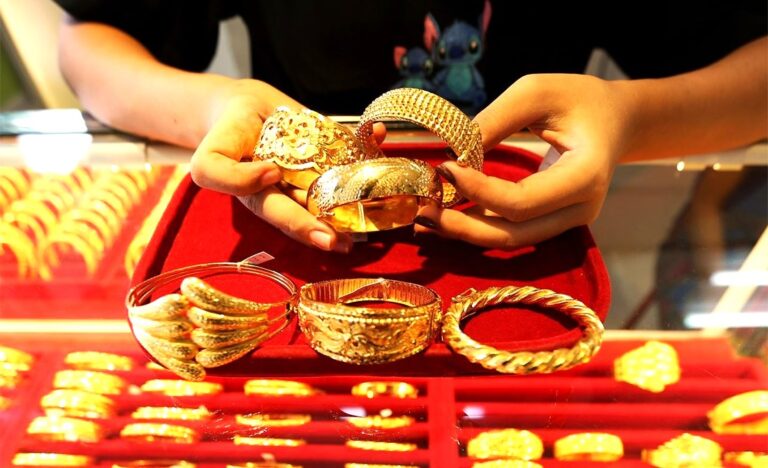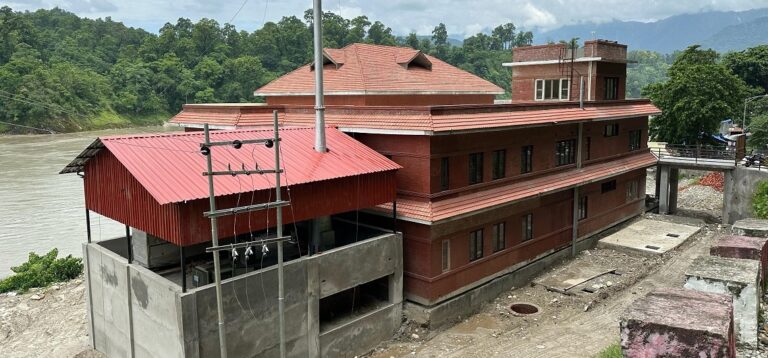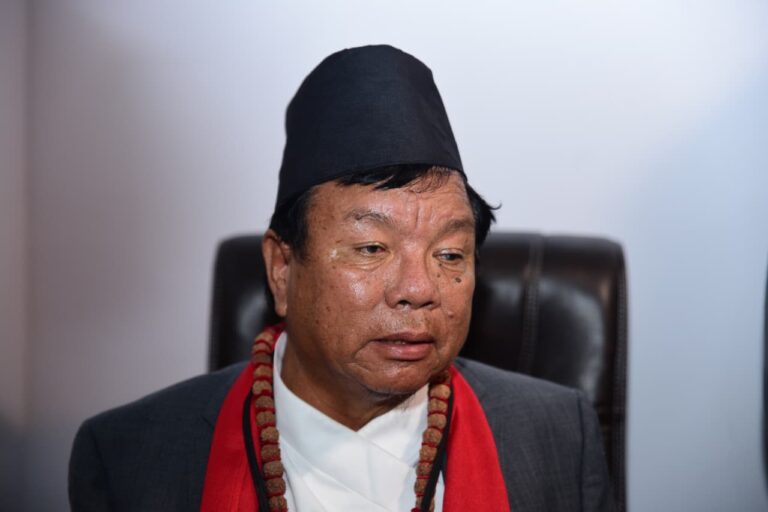
On the eighth day of Bada Dashain, known as Maha Ashtami, Nepalis are celebrating the festival with grand worship and devotion to Goddess Durga Bhawani.
On this day, special worship is performed for Mahakali, Mahalaxmi, and Mahasaraswati. Maha Ashtami is considered highly significant as it is believed to empower Goddess Durga with divine strength.
According to scriptures, rituals are performed at Dashain Ghars, the Kot courtyard, and other major Shakti Peeths across the country. Devotees recite the Durga Saptashati, Shrimad Devi Bhagwat, and Devi Stotra.
It is believed that both sentient and non-sentient beings desire liberation, and animals offered as sacrifice in temples and yajnas attain moksha and are reborn in higher forms.
The scriptures describe three forms of worship:
- Satwik – performed with water, sandalwood paste, rice grains, and the Shodashopachar rituals.
- Rajasik – includes animal sacrifice along with Satwik rituals.
- Tamasik – includes animal sacrifice along with offerings of liquor.
For Brahmins, however, animal sacrifice is prohibited. Still, sacrifice is considered necessary to destroy demonic tendencies, empower the goddess, and liberate the animals. References in Durga Saptashati (Chapter 8) also justify the tradition, making it scripturally valid.
It is also said that state rulers must offer sacrifices to gain divine power, mantra power, and enthusiasm, which can only be bestowed by Goddess Durga.
For this reason, animal sacrifices are performed on this day. At night, the Kalaratri Puja is held with special rituals and significance. However, Brahmins are exempt from performing the Kalaratri Puja.
Across the Kathmandu Valley, large crowds gather from early morning at major shrines such as Guhyeshwari, Maitidevi, Kalikasthan, Bhadrakali, Naxal Bhagwati, Shova Bhagwati, Bijeshwori, Indrayani, Raktakali, Vajrayogini, Sankata, Bajra Barahi, Dakshinkali, Chamunda, and Sundarimai.
Similarly, devotees throng important Shakti Peeths outside the valley such as Manakamana (Gorkha), Gahwamai (Parsa), Chhinnamasta (Saptari), Rajdevi (Dhanusha), Ugratara (Dadeldhura), Chandeshwori (Kavrepalanchok), Nala Bhagwati, Palanchok Bhagwati (Sindhupalchok), Kalinchok Bhagwati (Dolakha), and Pathibhara (Taplejung) for worship and animal sacrifices.
On Maha Ashtami, weapons, vehicles, and official documents (Kalpurja) are also cleaned, sanctified, and placed before the goddess for worship, symbolizing them as her divine weapons. Even the four divisions of the army (Chaturangi Sena) are invoked during the rituals.
Those who do not perform animal sacrifice instead offer symbolic substitutes such as cucumber, gourd, pumpkin, radish, and coconut according to their family traditions.
At night, the state conducts the Kalaratri Puja at Hanumandhoka Dashain Ghar, where 54 goats and 54 buffaloes are sacrificed on behalf of the government.




